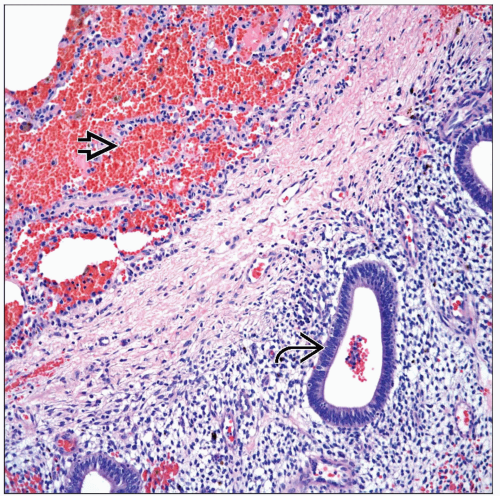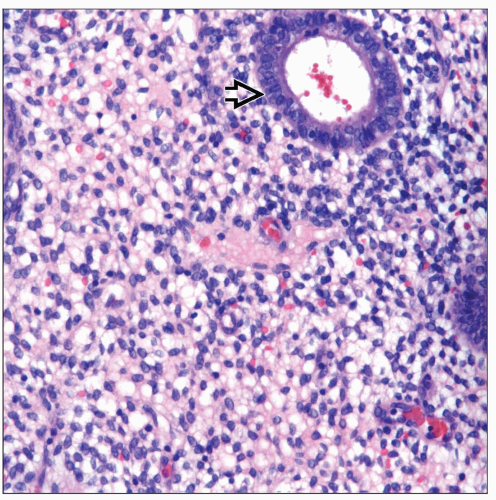Pleural Endometriosis
Key Facts
Terminology
Endometrioma, deciduosis
Clinical Issues
Incidence
Unusual occurrence in thoracic cavity
Predominantly in women of reproductive age
May be seen in older postmenopausal women
Symptoms
Cough
Pleuritic pain
Shortness of breath
Hemoptysis
Microscopic Pathology
Glands in proliferative endometrial phase
Plasma cells in stromal component
Medium-sized dilated vessels in stromal component
Myxoid or edematous changes in stroma
Cystic changes
Top Differential Diagnoses
Pleuropulmonary blastoma
More common in younger individuals (< 20 years old)
Commonly a cystic neoplasm
Adenocarcinoma
Glandular proliferation in endometriosis is embedded in cellular stroma
Glands in endometriosis have appearance of proliferative phase of endometrial cycle
Biphasic pulmonary blastoma
Both components in biphasic blastoma are malignant
TERMINOLOGY
Synonyms
Endometrioma, deciduosis
Definitions
Benign glandular proliferation of ectopic endometrial tissue in pleura
CLINICAL ISSUES
Epidemiology
Incidence
Unusual occurrence in thoracic cavity
Age
Predominantly in women of reproductive age
May be see in older postmenopausal women
Presentation
Cough
Pleuritic pain
Shortness of breath
Hemoptysis
Treatment
Surgical approaches
Complete surgical resection
Prognosis
Excellent
MICROSCOPIC PATHOLOGY
Histologic Features
Glandular proliferation
Glands in proliferative endometrial phase
Glands with mitotic figures
Mesenchymal-like stromal component
Plasma cells in stromal component
Medium-sized dilated vessels in stromal component
Myxoid or edematous changes in stroma
Cystic changes
Predominant Pattern/Injury Type
Biphasic
Predominant Cell/Compartment Type
Epithelial
DIFFERENTIAL DIAGNOSIS
Pleuropulmonary Blastoma (PPB)
More common in younger individuals (< 20 years old)
Commonly an intrapulmonary cystic neoplasm
Epithelial component in both endometriosis and PPB is benign
Stay updated, free articles. Join our Telegram channel

Full access? Get Clinical Tree







